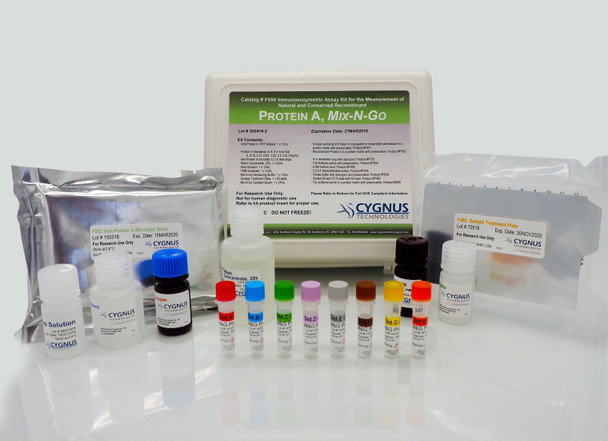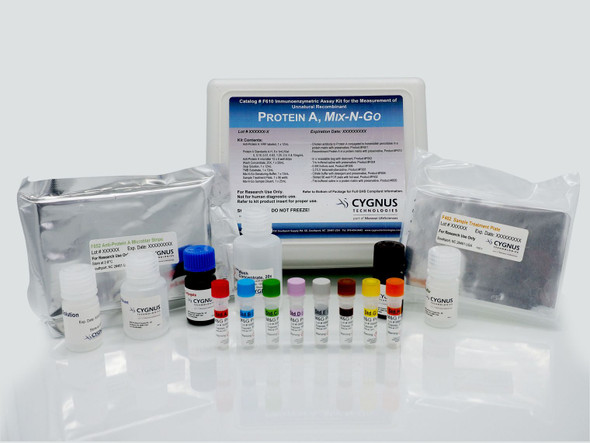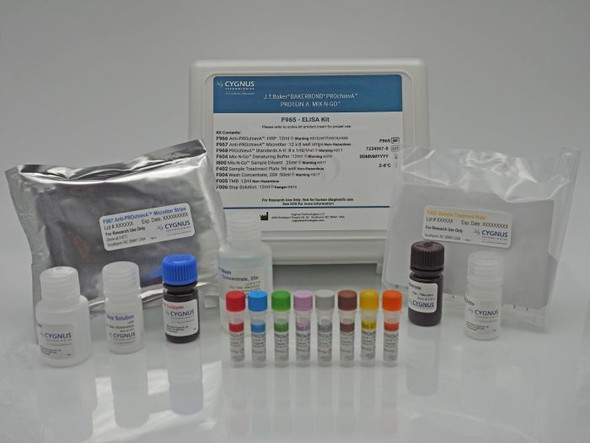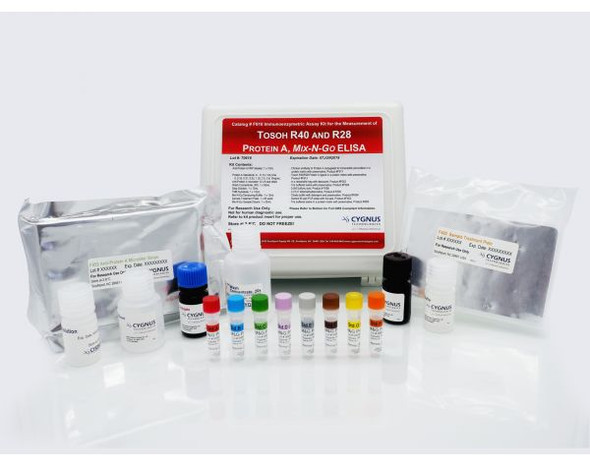Protein A Mix-N-Go ELISA Kit, natural | F600
- SKU:
- 214-F600
- Size:
- 1 Kit
- Product Type:
- ELISA Kit
- Storage:
- All kit reagents 2°C to 8°C
- Assay format:
- 96 Well Plate
- Time to result:
- ~1 hr. 45 min
- LOD:
- ~50 pg/mL
- LLOQ:
- 100 pg/mL
- Recommended Diluent:
- I600
Description
Protein A Mix-N-Go ELISA Kit, natural | F600
Protein A Mix-N-Go ELISA Kit, natural is intended for use in quantitating natural recombinant Protein A (F600) and unnatural Protein A constructs such as MabSelect SuRe™ (F610). These kits are for Research and Manufacturing Use Only and are not intended for diagnostic use in humans or animals. The F600 and F610 kits incorporate a well qualified sample treatment method to dissociate Protein A from IgG Drug Products without the need for boiling samples and the associated centrifugation step. These improvements increase the robustness of the method to accommodate previously problematic immunoglobulins. In doing so, the procedure has been simplified with over 1 hour eliminated from assay processing time. The Mix-N-Go Protein A assays are a two-site immunoenzymetric assay. Samples containing Protein A are first diluted in the Mix–N-Go Sample Diluent provided with the kits. The Mix-N-Go Denaturing Buffer is then added and mixed to dissociate the Protein A from the product antibody. The samples are then reacted in microtiter strips coated with a polyclonal anti-Protein A capture antibody. A second anti-Protein A antibody labeled directly with Horse Radish Peroxidase (HRP) enzyme is simultaneously reacted forming a sandwich complex of solid phase antibody-Protein A:HRP labeled antibody. After a wash step to remove any unbound reactants, the strips are then reacted with tetramethylbenzidine (TMB) substrate. The amount of hydrolyzed substrate is read on a microtiter plate reader and will be directly proportional to the concentration of Protein A present in the sample. Accurate quantitation is achieved by comparing the signal of unknowns to Protein A standards assayed at the same time.














